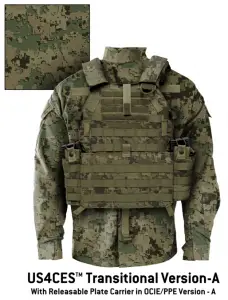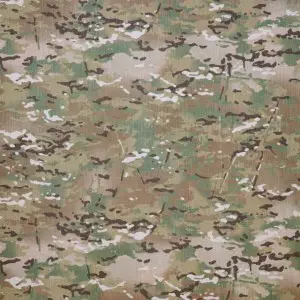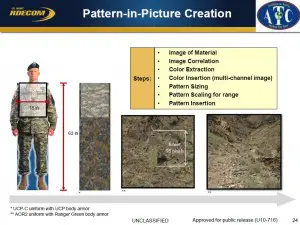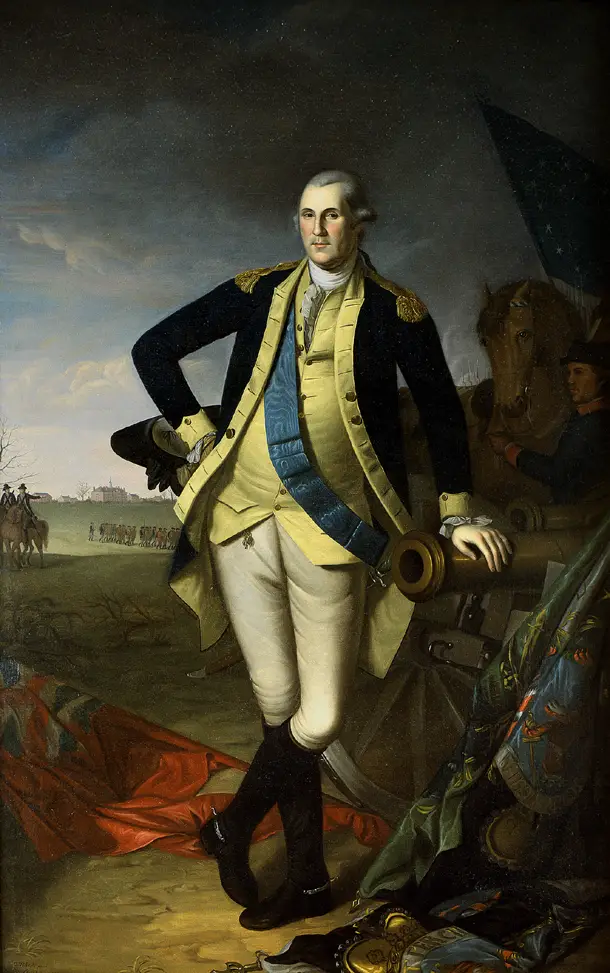Monthly Archives: February 2012
 ‘Tis a miserable time we’re having on the gigantic Oasis of the Seas of the screwed-up-like-a-soup-sandwich Royal Caribbean Line, so posting will be dependent on scheduled posts and on port calls in various third-world island harbors, which offer better connection options than the ship can manage (like “any”).
‘Tis a miserable time we’re having on the gigantic Oasis of the Seas of the screwed-up-like-a-soup-sandwich Royal Caribbean Line, so posting will be dependent on scheduled posts and on port calls in various third-world island harbors, which offer better connection options than the ship can manage (like “any”).
Some people like cruises. We are here with them. If you want to pay top dollar to spend a week in a Motel Six with 10,000 of your best friends, while constantly being barraged with upsell messages, this is for you.
Of course, the whole ship is also a Victim Disarmament Zone, which is its primary means of security. Not its only means – they can also call on the radio for help. The Bahamian Coast Guard would be on the way, sooner or later!
But hey, the crew played grab-ass all through the boat drill, because who needs that? I mean, what could possibly happen to a cruise ship?
Still, it’s Sunday, a day of rest, not matter how irrationally angry our aquatic incarceration makes us. Please avail yourself of recent posts. And batten down the hatches, matey, for a week of unfortunately sparse posting.
That was the week that was: 2012 008
This is a late post due to internet problems at sea, and we apologize for that. While this new week is shaping up to be a disaster here at WeaponsMan.com, the week just ended was a pretty good one. We’re happy that, as promised, we had more real gun technical coverage that we’ve had in a while.
We had 21 posts this week, and are closing in on the milestones of 200 posts and 100,000 words, just as we finish our second month. We’re enjoying an increase in the number and quality of substantive comments as well (and are receiving story tips in the comments, which we’re planning to use well). We don’t have the exact weekly statistics due to the internet hassles, but will try and add them later. No promises!
Recapping our stories:
- We told you Sunday wasn’t much of a day for work around here, as usual.
- Then we opened our five-part explanation of how to get the most from a Beretta 92 or M9 auto pistol. The five parts were:
- Part 1: Embrace the gun
- Part 2: Understand the gun
- Part 3: Maintain the gun
- Part 4: Master the basics
- Part 5: Master the gun.
- An SF guy who bozed out and brought the wrong day pack on a family trip was cleared of C-4 charges that could have landed him in jail. (If you think no one could have inadvertently lost track of a block of C4 at the range, you’ve never had a 20-hour demo training day).
- We looked at the strange and far too cozy relationship between Pakistan and Bin Laden.
- And took a moment to celebrate National Handcuff Day
- If you want a Genuine CAR-15, somebody had one for sale on GunBroker. Only $22k and it could be yours. Or you could spend twice as much on a Chevy Volt. (And six months after you buy them they’ll both be worth about $22k).
- A woman working at Eastern Tennessee State University lent an old rifle to a friend studying filmmaking and the campus cops went nonlinear over it. She learned the main lesson they teach at ETSU, “You really don’t want your kids to go here.”
- We had a preliminary story on the Stolen Valor case going to the Supreme Court. We’ll have a follow-up next week.
- And we had a report and photos on a new Kalashnikov, the AK-12 (That will be its official designation if, as the factory hopes, the Russian Army adopts it this year). No word on whether they’ll pay us a royalty for the Picatinny Rail, like we did for the Mauser 98 action.
- On Washington’s birthday, we looked at one aspect of Washington, the general: his gift for advancing talented subordinates, with Henry Knox as an example.
- The Wednesday Weapons Website of the Week was the gunsmith’s pal: Brownell’s.
- If Someone Invades your House… with a gun… and you’re unarmed… you need to do what this guy did.
- The Army’s going to buy New Camo… Again? Good thing the taxpayers aren’t restive… oh, wait.
- The Navy wants to change the EOD motto, and that’s got a lot of play in the blogosphere. We’re not even squids, but in Think of it as Alternative Success, even though we razzed Admiral Tee Ball a little, we pointed out something we don’t think any of the other razzers did: he is a career EOD guy.
- We collapsed into solitude with a brick-firing Lego gun. Cause you can’t be serious all the time.
- The Saturday Matinee 008 was the classic Cold War red-scare flick, Red Dawn. It just doesn’t get any more guerilla than that.
-
And that brings us back to this post…That Was the Week that Was: 2012 Week 08. We’ll spare you the recursive link.
Wait, you say. We said 21 stories… OK, that’s counting the five parts of the Beretta story separately. Each one was story length and ran on a separate day!
They’ve now been added. A few words were added and typos fixed. We still don’t have comment stats, but the week’s vitals were 21 posts and 13,441 words.
Saturday Matinee 008: Red Dawn: Guerilla Warfare at home
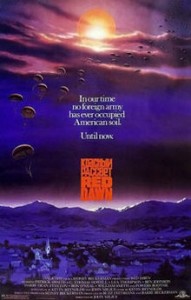 The parachute drop is a success and the troopers land safely and assemble. It’s just the thing to distract a bunch of bored high school students on a nice day. Their teacher walks out to see what the camouflage-clad men are doing as the kids line the widows to watch him.
The parachute drop is a success and the troopers land safely and assemble. It’s just the thing to distract a bunch of bored high school students on a nice day. Their teacher walks out to see what the camouflage-clad men are doing as the kids line the widows to watch him.
And he’s suddenly blown away by a burst of machine gun fire. The troopers turn their fire on the school, and the horrified students freeze and die, or flee and probably die. It’s every man for himself.
Those are, of course, the opening moments of Red Dawn. More than a little far-fetched — invaders decided to begin with Colorado? Paratroopers in any army undisciplined enough to begin their war with a school massacre? — but it serves the purpose of grabbing the audience by the throat and shaking vigorously. The movie keeps shaking till the end, almost two hours. In the end the good guys win, but not without really paying for victory.
Red Dawn was a creature of its time, the early Reagan years, the high-water mark of the nightmare that was world Communism, the ideology that aspired to be, in Orwell’s phrase, “a boot stamping on a human face — forever.” A few short years later Soviet Communism would have joined its fellow militaristic socialist utopias among history’s losers, defended only by academics and entertainers who had no first-hand experience of it, and denied by most of its ashamed former adherents and troops. So Red Dawn is a time capsule of the era that brought in Reagan and sent out Brezhnev, to the betterment of the entire globe. We were there when it opened… in a theater in Fayetteville, North Carolina, with an audience mostly of soldiers and their ladies.
The ideology behind a movie about a Communist conquest of the United States always sat ill with Hollywood in general. Hollywood mythology has the Communists as good guys and anti-Communists as hypocritical McCarthyites or, worse, Republicans. A few Hollywood figures wore this hair shirt with enough pride to get this movie made and released — the principal sparkplug of the film being unabashed patriot (a word so out of fashion in the industry, it might be in the Carthaginian tongue) and fan of the military, John Milius.
So what did they make? Is it any good?
Actually, it is. It tells the tale of very ordinary people thrown into absolutely world-shaking events, given nothing but tough choices, and having to deal with it. The young actors are not great, although some of them would go on to be, if not great, at least famous (Patrick Swayze, Jennifer Grey, and Charlie Sheen). There is one outstanding performance: Ron O’Neal as a lithe, committed, brave Cuban officer struggling with a nagging feeling he’s on the wrong side this time.
And not incidentally, it reminded Americans of exactly why we disputed the world with Conmunism, and exactly why it mattered to win.
The movie leaves the strategy of the war, and the war itself, almost entirely off screen. Instead, it deals realistically with the same conflicts of occupation that we saw in It Happened Here: collaboration, resistance, propaganda, terror. Because it takes the viewpoint, mostly, of the “good guy” resisters, it’s less subtle than the British film, but it doesn’t shrink from the extreme measures that civil wars and occupations produce — on both sides. It escapes cartoonish jingoism through the depth of Ron O’Neal’s character — which is partly the script, and certainly partly O’Neal’s skill. What ever happened to him?
Hollywood has been struggling to release an updated Red Dawn. The initial version had Red Chinese as the villians, and that was a non-starter in today’s Hollywood, which sees China as a market and a source of capital. So it had to be reorganized, and now the baddies are Norks. The idea of North Korea, a feeble army that rules a starving country, which can’t even feed the army let alone arm and support it, invading the US requires a suspension of disbelief that makes the original version’s Russian and Cuban occupiers seem much less far-fetched.
OK. This is just silly: Lego sniper
Here you have someone expending a great deal of time to shoot a lego brick four feet. But this kid actually built a Lego repeating rifle out of, of course, Legos. This one is a model of the British Accuracy International L96A1. (Link is to the real, not plastic block, version). The same guy has several more versions out there. Sometimes you just know your kid is a future mechanical engineer.
http://www.youtube.com/watch?v=uP-NjU0E5KM&feature=youtu.be
Supposedly, there is a link there that lets you download instructions. Alas, it hits you with spams and then doesn’t work, so don’t go there. But it’s OK to look at the rest of his Lego guns on YouTube — we think.
Think of it as Alternative Success
 The Navy trains all services’ EOD techs, at a school in Pensacola, FL, and a pretty good job they do, too. For the last ten years, EOD along with the SEALs has been among the Navy’s biggest contributions to the wars. I mean, an Ohio-class sub is all well and good, but you’re not going to sail it up the Helmand and drop a Trident on an enemy sangar.
The Navy trains all services’ EOD techs, at a school in Pensacola, FL, and a pretty good job they do, too. For the last ten years, EOD along with the SEALs has been among the Navy’s biggest contributions to the wars. I mean, an Ohio-class sub is all well and good, but you’re not going to sail it up the Helmand and drop a Trident on an enemy sangar.
Or maybe you will. It is budget time, and services do silly stuff. But a team of guys who can render IEDs safe — well, let’s just say their utility is clear.
And they take their mission seriously, or maybe with a little black humor. But this doesn’t sit well with some elements in the Navy, such as underemployed admirals (the Navy doesn’t have more admirals (216) than ships (285), but if you count only surface combatants (122) there’s a lot of extra flag officers). Specifically, RADM Michael Tillotson has a beef with the EOD school’s motto, “Initial Success or Total Failure.”
PENSACOLA, Fla. — The school where bomb technicians from all branches of the U.S. military learn their craft has been ordered to remove the unofficial motto “Initial Success or Total Failure” from its classroom walls.
Rear Adm. Michael Tillotson told school leaders this month that the motto could be viewed as disrespectful to the hundreds of Explosive Ordnance Disposal technicians who have died in the line of duty.
“The motto itself holds potential insensitivities and implies that our fallen and wounded EOD Warriors have somehow failed,” Tillotson, who is based in Norfolk, Va., said in a memo to the Florida school.
via Navy Bomb School Told to Remove Unofficial Motto | Military.com.
So let’s get this straight. RADM Tillotson, who comes across as a product of tee-ball, social promotion, and scoreless soccer, wants us to think that the guys who got blow’d up trying to render-safe enemy ordnance didn’t fail. That’s far too offensive a word for a Navy that’s fixing to scuttle 30 to 50 of its too-few ships, but hang on to all 216 of its too-many admirals. In Tillotson’s world, wherever it is, those guys didn’t fail and it’s “disrespectful” to say they did.
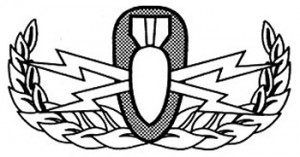 RADM Tillotson, words have meanings. Perhaps some, perhaps many of those deceased joint services EOD men succeeded in their mission despite failing in their secondary mission of staying alive. And the nature of life and death being what it is, they can’t come back from the other side and tell us how they feel about it. But we know a bit about men at war, and we think that they’d be cool with the motto. They’d protest any change, particularly any change — like RADM Tillotson seems to want — that waters it down. “Look at us,” they would cry, “see why you must always be confident and correct, for there is no coming back from an error in our line of work.”
RADM Tillotson, words have meanings. Perhaps some, perhaps many of those deceased joint services EOD men succeeded in their mission despite failing in their secondary mission of staying alive. And the nature of life and death being what it is, they can’t come back from the other side and tell us how they feel about it. But we know a bit about men at war, and we think that they’d be cool with the motto. They’d protest any change, particularly any change — like RADM Tillotson seems to want — that waters it down. “Look at us,” they would cry, “see why you must always be confident and correct, for there is no coming back from an error in our line of work.”
EDIT: See UPDATES below.
Perhaps their shades hang around the classroom in Pensacola, wishing they could speak to their brothers and successors who come out of the Navy’s fine school. But if you could speak to them, and ask them if they had achieved initial success, or total failure, they would hang their heads and tell you the truth, and if anything, they would urge the training cadre on to new heights.
Because being dead may not be Total Failure. But we know better than to let some well-intentioned desk skipper relabel it with euphemisms. “Hey! Sorry you’re dead. But hey, don’t let it get you down. Think of it as alternative success.”
UPDATE:
Before EADM Tillotson made his media appearance, the servicemen painting over every example of the slogan, and even the officers directing the matter, had no idea who had ordered the motto’s Orwellian erasure, or why. The following is a sanitized version of the instruction as receive in email by the school’s instructors:
I need… either the [Division Officer or NCO/Petty Officer in Charge] to personally inspect all spaces under your cognizance. This includes training areas (e.g. IED huts, BC labs, PT areas, ice house, class plaques, ceiling tiles, etc) and any place that this phrase may possibly reside. If, for example, you find a wall with the phrase, don’t just take a can of spray paint to it. Annotate it and add it to the list of places you found the phrase and we’ll work with facilities to get it painted over to make it look nice.
If/when I find out more about the driving factors I’ll get back to you. If you have legitimate complaints and/or your instructors morale is negatively affected save your concerns until next Tuesdays Divo meeting or come and talk with me personally. I need confirmation this has been completed by 1100 Friday 10 Feb.
Of note, this does not apply to personal memorabilia that individuals have on display at their desks or in their PERSONAL work areas.
It was signed by the school’s Training Officer. The poor wretch clearly didn’t know why he was ordered to nuke a school motto that’s been used since the 1970s and quite probably earlier. As memos go, it’s not quite Initial Success is it? Good job that we’re now whistling past the other side of that saying,
UPDATE II:
Naturally, there’s a Facebook group (or whatever Facebook things are), Keep “Initial Success or Total Failure” in EOD School. On the page, there are some grim suggestions for Tillotson-friendly new mottos: “Initial Success or …here’s a hug, go ahead and try again” …. “Initial Success, we’re all winners”
 UPDATE III:
UPDATE III:
Looking at RADM Tillotson’s official Navy bio doesn’t suggest a guy who’s unaware of, or indifferent to, EOD culture. He’s qualified as an EOD officer and has spent most of his career commanding EOD units. Same bio, we think, but different photo here.
His Command Master Chief, Farris Foresman, is also an EOD guy with the Combat Action Ribbon. This just doesn’t suggest a couple of guys who would be numb to how the bomb techs think. Is the media — ourselves included — teeing off prematurely, or did they simply botch the rollout of this initiative? Reading RADM Tillotson’s and CMC Foresman’s bios, we wonder if we’re off base with the snark, and being unfair to a good Naval officer.
Heck, we’re Army anyway. The Navy will sort this out, and it may be that the EOD techs go on to brag about being old timers, who went to school when failure was still an option, albeit a very unappealing one.
Beretta M9 Hands On Part 5: Master the Gun
This is the final step on a journey that began with last week’s discussion of Beretta M9 history , and this week led you through a lot of Beretta tribal knowledge and confidence building. If you’ve been following along with gun in hand, and on the range, you’re probably getting pretty good. You’ve got the first four steps down. Now it’s time to Master the Gun.
- Embrace the gun
- Understand the gun
- Maintain the gun
- Master the basics
- Master the gun
Master the gun
You can do some amazing work with an M9 once you have truly mastered it. That includes extending its range envelope — an experienced shooter who has trained to do this can engage man-sized targets at 100m with the pistol, consistently. The steps that begin to bring you there are shooting basics and gun knowledge. Applied, on the range or in combat, they extend your lethal range with the M9.
Mastery is thinking three-dimensionally in combat. Most people never practice to engage targets that are not in a level plane with themselves, and as a result, when faced with a target on a higher or lower elevation, they miss. Ballistics is funny that way — have to aim up, your shot will go high if you don’t compensate. Have to aim down? Your shot will fall.. high, if you don’t compensate. So if you’re not shooting level, aim low.
Mastery includes moving targets, which should never be engaged before one is hitting the stationary target consistently and in tight groups during timed fire.
Mastery is being able to hit targets when you are moving, and this is something one needs specific training for.
Mastery is being able to hit targets with one hand, either hand, and with two hands but firing with the weak hand. It’s being able to hit with either eye closed. True mastery means staying in the fight even if wounded.
Mastery is being able to hit targets at normal combat ranges without using the sights. Yes, you should always use the sights and almost always can. But a master can will a round on to a target, because he’s practiced until the extended boreline of his pistol is practically visible to him.
Mastery also includes CQB training, including drawing the pistol and transitioning from rifle to pistol. This is not training your should give yourself. The 100-meter thing is, definitely (and it’s a great range trick to impress your friends, once you have it down. The secret is judging range and holdover, using your steady-hold factors, and simply knowing that it can be done). But any kind of CQB or quick-draw practice without professional instruction and range control is extremely risky, and that’s probably why your range forbids it. Firing on the move is risky.
Night fire is risky — but if you have a gun for defense, it is likely that night is when you will need it. Night fire, in the eerie partial illumination of moonlight, the strange lights of urban areas, and the pure inky darkness of the new moon, is part of mastery.
Will you be ready? You will when you achieve mastery. “But sensei,” you say. “It’s an asymptote, no, it’s worse than an asymptote — the closer I get to mastery the more I feel I must practice and learn.” Ah, yes, Grasshopper. You begin the path to enlightenment.
New Camo.. again?
The Army continues to spend, spend, spend on the development of camouflage uniforms.
This is the problem you get into when you make a really bad decision [.pdf], namely, the issue of the ACU in the digital Universal Camouflage Pattern. The Army digital uniform replaced both a uniform that was OK in temperate zones (BDU), and a uniform that was fantastic in the deserts of Iraq and Afghanistan (DCU), with a uniform that was rotten in both. It wasn’t quite as bad as making everybody wear Hunter Orange, a Sergeants Major Safety Belt, or a VS-17 panel, but it was pretty bad. CNN interviewed Army project manager COL Bill Cole last year:
The one-size-fits-all approach of the universal pattern wasn’t working.
Cole says the Army probably knew at the time that the universal pattern wouldn’t be perfect for every environment, but didn’t realize how much of a compromise it would have to make.
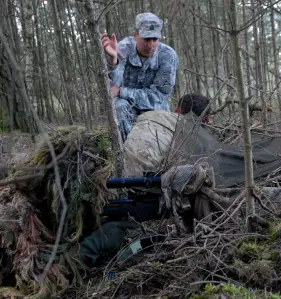
See our point? There are three soldiers in this picture, one in Army UCP camo. Image: SSG Gina Vaile-Nelson, US Army, via Dominic Hyde.
Now that story cost us, and you, nothing, and it’s worth just what we paid for it. For all we know ACU Digital was selected after a comprehensive computer-assisted analysis. But we don’t know. And neither did COL Cole. He did know why Digital UCP was having a hard time in Stan:
[S]oldiers, many of them redeploying to Afghanistan, began voicing their criticism in the summer of 2009 of the “universal” camouflage pattern, introduced in 2004 and meant to be used in all types of battle environments.
“They were saying that they didn’t think the color selection was very effective for the terrain in Afghanistan,” says Col. Bill Cole, the project manager for Soldier Protection and Individual Equipment. “Afghanistan’s a really diverse country in geographical terms. There are lots of sandy desert areas, but it also has mountainous areas that you would see up in the Alps. It has green irrigated fields that look like Iowa in the summer. It’s a very diverse environment and soldiers would often traverse these different areas in one patrol.”
So, in 2009 the Army hastily adopted the far superior Crye Precision Multicam pattern for Afghanistan. Not for general use, mind you, because we’ve sunk billions into ACUs, but we’ll call this the Operation Enduring Freedom The Army resisted adopting it as a general-issue item, because the pattern has more colors than the Army Digital Pattern and therefore costs more to print on uniform fabric. ACU costs were already through the roof —
Back in January, the Army announced its finalists for the new camouflage. Reportedly, most of them look — after all the millions spent so far — much like the Marines’ MARPAT. Naturally, the prime contractors mostly will be, not firms that know anything about camouflage design, but marketing firms that know how to make contracts happen, or can get minority set-asides. But they have to at least partner with camouflage designers.
The Army will review the patterns, which have been provided digitally, by projecting them against a series of terrain shots, and by having prototype uniforms made and worn in varied terrain. In summer, the Army will analyze the data and prepare a report and decision brief for the Chief of Staff — if all goes well, soldiers could be in new suits by the end of 2013.
One thing that’s off the table is Multicam, although its developer, Crye, is still participating. The other teams are: ADS/Hyperstealth, Brookwood, and Kryptek. Only the ADS uniform has had photos released. The Kryptek jacket shown here is a commercial pattern, Alios, available to hunters at Cabelas, but this will not be the pattern they submit — it’s just a clue to their thinking.
So in the end, we’ll have had three entire rounds of procurement trying to get the guys decent camouflage uniforms. (ACU, then the Multicam OEF pattern, then this new one) which may or may not actually produce new and better uniforms. But it sure does keep the development people developing.
Nobody in the Army today wants to hear it, but OG107s — with a little local mud or dust on ’em after a while — worked about as well as any of these salad suits, and a lot better than the dayglo ACU. But who would feed the children of that other army, the uniform developers?
If someone invades your house…
…meaning to do you harm, what do you do?
There’s only one right answer: stop him. For this man in Antioch, CA, that meant wrestling the gun away from the would-be robber, and killing him dead as a doornail. The San Jose Mercury-News has sparse details:
The man confronted the suspect, and the two struggled.
[T]he resident wrestled away the suspect’s gun and shot him several times with it. He then called police.
The suspect was pronounced dead at the scene. Police are still trying to identify him.
There are a pitiful few more details at KTVU TV, and the Fresno Bee and Contra Costa Times have more, including the identity of the 18-year-old decedent (we can’t really call him “victim”, can we?) and the identity of an alleged accomplice who has been charged. A third accomplice remains at large.
This 18-year old kid apparently, according to these news stories, selected a door at random. But the 34-year-old man there refused to be a victim. There are important lessons for everyone here.
First, sometimes trouble comes to you. Nothing indicates that this young dad did anything to provoke the wannabee robbers. He was at home with one child, behind a locked door.
Second, never quit. Even when you are disadvantaged by age and are unarmed against a younger, armed assailant, do not be a victim.
Third, gun prohibitionists often say that a criminal is more likely to disarm a citizen than the citizen is to successfully resist the criminal. As far as we know there are no statistics on this whatsoever, and there are very few anecdotes. In fact, the preponderance of anecdote seems to indicate that homeowners shot with their own gun are a very rare thing, yet it happens to criminals (and, unfortunately, police) with some regularity. We wouldn’t read too much into that, because the tables-turned story is catnip to newsmen and so that kind of story gets written up more. (Would any of the news media above have written up a home invasion without a shooting? Probably not. Antioch has some crime — and look here, another case of a would-be thief collecting hot lead and a Darwin Award instead of cold cash, last November).
Beretta M9 Hands On Part 4: Master the Basics
This is the third step in your journey to get the most from a Beretta M9 or M92 series weapon. The five parts of the series are (with the past ones linked for you, in case you’re playing catch-up):
- Embrace the gun
- Understand the gun
- Maintain the gun
- Master the basics
- Master the gun
Did you zero the gun? What, they’re zeroed at the factory? No they ain’t. Beretta USA zeroes military M9s at the factory. The ones going to the corner gunshop (or the Mayberry PD), they don’t bother. Or to put it more politely, they leave it as an exercise for the reader. We estimate that 95% of the civil M9s and M92s out there have never had their sights touched. That’s one reason people don’t appreciate the accuracy of these things. Having seen a basic truckload of these, bet it shoots low. Rather than applying Kentucky windage (or is that Kentucky elevation?) you need to adjust the sights. This is never done in the military, but as I said, the military guns get a rough zero at the factory, and the military does not have high standards for basic pistol qualification.
While there are adjustable-sighted models, most Berettas have fixed sights. “Fixed” is relative — you can adjust windage with a drift punch, and elevation with a file. Where you want the pistol sighted depends on what you want to do with it. The military’s official manuals say that the effective range of a pistol — any pistol — is 50 meters, and the conventional Army trains that way. This is utter nonsense. An M9 will hit and kill at 100 meters and beyond, if you simply have the confidence to train and employ it that way. It doesn’t shoot as flat as the .38 Super, but not much does. (Of course, if you’re a civilian training for self-defense, a 100-yard shot might take some ‘splainin’. But the confidence it gives you will reward you at closer ranges.
OK, so the pistol shoots from a rest to point of aim at 25 yards, good. Now it’s time to spend some quality range time with a good coach and work on your marksmanship. Use bullseye targets. Score every target and record your score in a notebook. Call every shot. Begin with slow fire. Don’t get ahead of yourself. This gun has x-ring potential, and so do you. Get there.
Sight alignment and trigger squeeze are the two places your shots are most likely going wide of the mark, and even if you’re in the black every shot, working on these two fundamentals will produce improvement. Focus on the front sight. Will the bullet on to the target, in to the X-ring. Repeat. This is not the time to whine about the trigger quality of your service pistol. The fact is, it shoots better than you do. Shut up and practice.
Once you have got slow fire down, go to timed fire. Only then do you graduate to basic drills such as controlled pairs (one double-action, one single) and reload drills. Ball and dummy drill is particularly useful. On this, your coach or partner loads your mags but sneaks in a dummy round, causing a misfire and forcing you to do a misfire drill.
Dry-firing is extremely useful. It will not hurt a 92, it costs nothing. Assuming you can do this without boozing, it can actually be a good drill to watch the tube, Beretta in hand. When the bad guys come on the screen, dry fire at them. Call your shots. (we leave the definition of bad guys as an exercise for the reader, all we’re going to say about that is that we miss Dan Rather’s newscast).
Happy Birthday, George
Washington, of course.
Since holidays promoting Washington and Lincoln were compressed into a single Presidents’ Day, a day that some would have honor Martin Van Buren and US Grant as well, to free up a day for Rodney King, many Americans have lost touch with George Washington.
And that’s a shame.
This page is an excellent appreciation of some of Washington’s gifts in the political realm. Here, though, we’d like to mention just one of his many gifts as a military officer: he was a great selector, motivator and promoter of subordinates.
This shows up in things like his invention of the Purple Heart Medal, the first and the oldest still-awarded military medal in the world; in his constant battle to keep motivated, armed men in his ranks; and in his perception of talent another might miss.
The best example of this Washingtonian talent-scouting was probably Henry Knox. Knox was a young bookseller, whose hobby was reading books about military affairs. He knew all about artillery — at least, as much knowledge as could be gained from words on paper, and serving in a ragtag colonial militia unit. Which, to be sure, was more than anyone else in the nascent Continental Army of 1775. It couldn’t have been his gun-handling skills — he was short a couple of fingers from a negligent discharge — so the book knowledge is probably why Washington made him commander of the artillery — a prestigious post, perhaps, except there was no artillery.
So working on a general task order, Knox took a party to Fort Ticonderoga, recently captured by Ethan Allen, and recovered the artillery therein. Knox’s movement of the artillery pieces from Ticonderoga to the bluffs at Dorchester overlooking Boston was one of the greatedt, most conseqential military marches, ever. Sixty tons of artillery, powder and shot were manhandled for 300 nearly trackless wilderness miles on sleds drawn by oxen — and men. When the British woke up in Boston, to see those cannon looming over them, they set sail for New York and leave the city to Washington — and Knox.
Knox watched his wife’s parents sail off with those ships and he, and she, never saw them again. But he was devoted to liberty, and she to him, to the consternation of her Loyalist parents. Would today’s Army have noticed and promoted Henry Knox? Our famous general of the hour, David Petraeus, would have dismissed him on sight as a podgy butterball; these days ability takes a back seat to what Shakespeare called “that lean and hungry look.” This is said not to diminish Petraeus’s talents, but to hail Washington’s.
Washington is the sort of man, then, who could spot the talent of Henry Knox, a doughy, bookish man who would repay Washington’s trust with steadfast loyalty and serve as the first President’s first Secretary of War. Whereas Petraeus’s rangy Rangers seemed to be racing, chasing, stumbling and tumbling over one another to bad-mouth him to the press. He could have done with a Henry Knox, whether he wanted one or not.
Washington is sometimes considered an irregular or guerilla reader by the general public, and that is one more marker of how the study of him has been deprecated, for it is remote from the truth. Washington’s focus from day one was to build a regular army that could stand against the British, a seemingly impossible task, an organizational moonshot. But he did it, and his correspondence shows his preoccupation with logistical issues — matters that today’s commander could delegate with confidence to his G-1 and G-4 staff officers. He was also a capable strategist and tactician, not only putting the British Army at a tactical disadvantage by clever maneuver, but even outflanking and forcing redeployments of the Royal Navy, the major arm of the then-dominent world power.
He was also able to turn the terrain to his advantage. It may be that people think of Washington, the man who aspired most surely to lead straight ranks of disciplined regulars, as a guerilla because of his boldness in the field. Most Americans can recognize the heroic painting of Washington crossing the Delaware, but sadly, few know the story of the battles of Trenton and Princeton. Few know the story of the night withdrawal across then-rural Manhattan Island under the guns of the Royal Navy. And hardly anybody knows the story of Henry Knox, told above.
And in the end, his greatest contribution, as the political story linked above noted, and the one that truly shocked his adversary George III, was that, when his time was up he went back to his farm. “If he does that, he will be the greatest man ever!” George is reported to have exclaimed. Perhaps the King was right.
So let’s raise a glass to George Washington, a man whose brilliance has been so cast aside by the boomer generation and their rejection of all that is old and true, and worship of all immediate novelty. His is the character upon which this entire nation stands, and that it has stood so long and so well is one measure of his solidity.

Kevin was a former Special Forces weapons man (MOS 18B, before the 18 series, 11B with Skill Qualification Indicator of S). His focus was on weapons: their history, effects and employment. He started WeaponsMan.com in 2011 and operated it until he passed away in 2017. His work is being preserved here at the request of his family.

